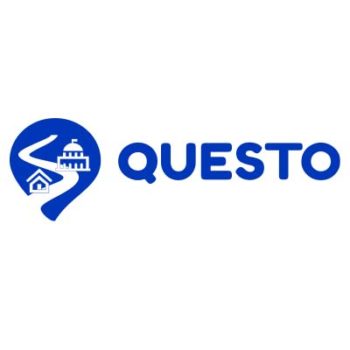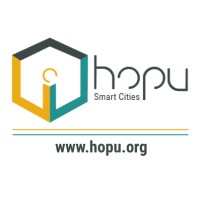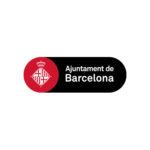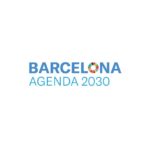Innovacció 2030
Open call: Sustainable tourism in Eixample
In recent years Barcelona has seen a dramatic increase in the number of visitors and tourists coming to the city, making it one of the most visited cities on the planet. Tourism is one of the city’s main economic sectors, generating more than 150,000 direct and indirect jobs, and is the fourth largest wealth-creating economic activity in the city. At the same time, this growth in tourism has become one of Barcelona’s most prominent challenges and one of the main concerns of the city’s citizens.
The Covid-19 pandemic, however, has had a strong impact on the tourism economy, particularly impacting neighbourhoods such as Eixample and Ciutat Vella, which account for a large part of the city’s tourists and visitors.
Therefore, the Covid-19 crisis presents a good opportunity to design future economic policies that will promote more sustainable tourism, aligned with the commitments of Agenda 2030, Barcelona’s 2020 Strategic Tourism Plan, and the United Nation’s (UN’s) Sustainable Development Goals (SDGs). In this context, technology and digitalisation are tools that can play a fundamental role in tackling society’s social and environmental challenges. Therefore, technology can help turn tourism into an agent of change to promote more sustainable lifestyles, patterns of consumption and production models.
The Eixample district is one of the areas of the city that sees the greatest influx of tourism as it is home to some of the city’s most iconic tourist attractions such as the Sagrada Família and La Pedrera as well as emblematic thoroughfares such as Passeig de Gracia and Rambla Catalunya. This means Eixample is an ideal district for testing new tools and innovative solutions that will promote more sustainable tourism and help overcome the challenges that have arisen from it thus far. With this in mind, the Eixample district has identified three relevant themes to base innovative projects around.
These themes are (1) data and mobility, (2) managing the district’s heritage and promoting economic opportunities and (3) smart communication.
Areas
The challenge
Looking at the territorial characteristics of the city, Barcelona is a small city geographically speaking covering an area of 101 km2 but has a high population density (15,887 inhabitants per km2) compared to other European cities.
In addition to these territorial characteristics, it is essential to bear in mind that tourism tends to concentrate on certain geographical points. Both tourism supply and demand tend to be unevenly distributed throughout the city, with some neighbourhoods and areas seeing much more intense levels of tourism activities than others and Eixample is one of the areas with the highest rates of tourism intensity. The Eixample concentrates the largest supply of accommodation in the city. In 2019 Eixample had 21,505 hotel beds and 29,754 bed places in tourist accommodation, in both cases more than in the Ciutat Vella district. Furthermore, Eixample is home to the iconic Sagrada Família, with its 4.5 million ticketed visitors a year, and two of the other main points of visitor interest in the city, La Pedrera and Casa Batlló, each with 1 million annual visitors in 2019.
The impact of Covid-19 on the city’s tourism sector, however, has been very significant with a huge reduction in the number of visitors (down to 2.1 million in 2020) and the partial or total closure of many of the city’s tourism activities and services. However, forecasts indicate that the sector will recover 60% of its pre-Covid-19 activity by 2022 and will be fully recovered by 2023.
In this sense, the pandemic should be understood as a moment for promoting a tourism sector that has a greater focus on quality and sustainability and offers more personalised attention using technology and data.
Furthermore, promoting sustainable tourism aligns with the SDGs; specifically with SDG 10, regarding the reduction of inequalities, SDG 11, aimed at sustainable cities and communities and SDG 12, aimed at responsible production and consumption.
1) Data and Mobility
2) Managing the district´s heritage and promoting economic opportunities
3) Smart communication.
Solutions must have a technological development level equal to or higher than Technology Readiness Level 6 (TRL6) and implementation must be technically feasible within 12 months. Solutions that require little infrastructure and/or are affordable and have the potential to scale to other areas of the city will be considered positively.
The prize money going to the winning solution will be used to support the implementation of the pilot project in the Eixample district of the city of Barcelona.
In addition, the Eixample district seeks to identify pilot projects that will help achieve some of the cross-cutting objectives set out in the 2020 strategic tourism plan for the city of Barcelona, such as:
• Redistributing the returns from tourism activity to favour greater social benefits
• Strengthening the link between tourism and the city’s strategic economic sectors
• Promoting local commerce and gastronomy
• Improving the coherence between tourist and citizen uses of public spaces
• Extending the Biosphere Tourism Sustainability Commitment to tourism companies and services in the sector.
Meet the semi-finalists

QuestoApp

AR Vision

Bluecity

World Around ME

Hopu

MyStreetBook

IERTEC

Dinycon

Galgus

OK Located

eXplorins




Key dates
How to participate
FAQs
Tourism is one of the city’s main economic sectors, generating more than 150,000 direct and indirect jobs, and is the fourth largest wealth-creating economic activity in the city. At the same time, this growth in tourism has become one of Barcelona’s most prominent challenges and one of the main concerns of the city’s citizens.
The Eixample district has identified three relevant themes to base innovative projects around.
These themes are (1) data and mobility, (2) managing the district’s heritage and promoting economic opportunities and (3) smart communication.
Eixample is an ideal district for testing new tools and innovative solutions that will promote more sustainable tourism and help overcome the challenges that have arisen from it thus far.